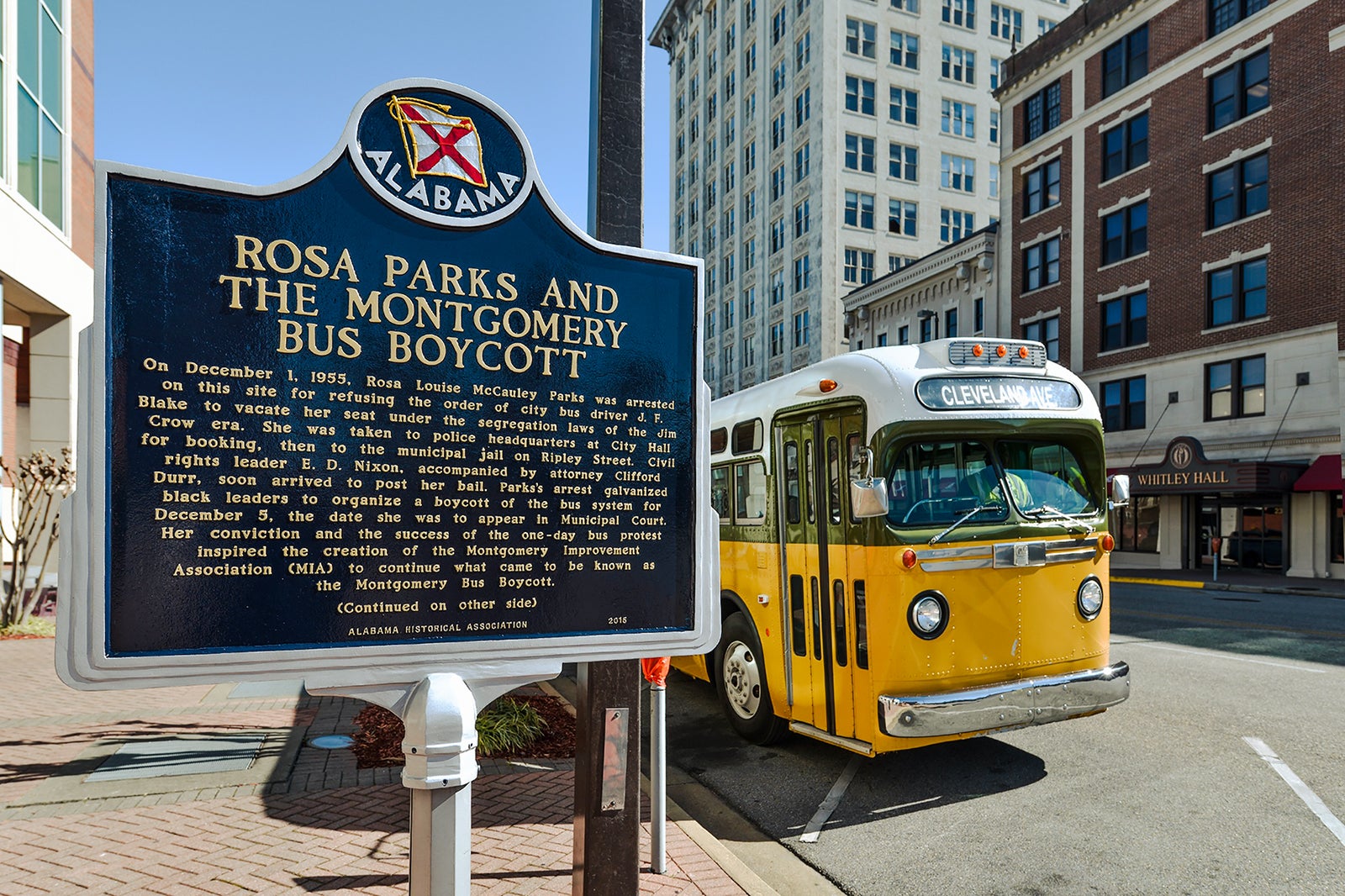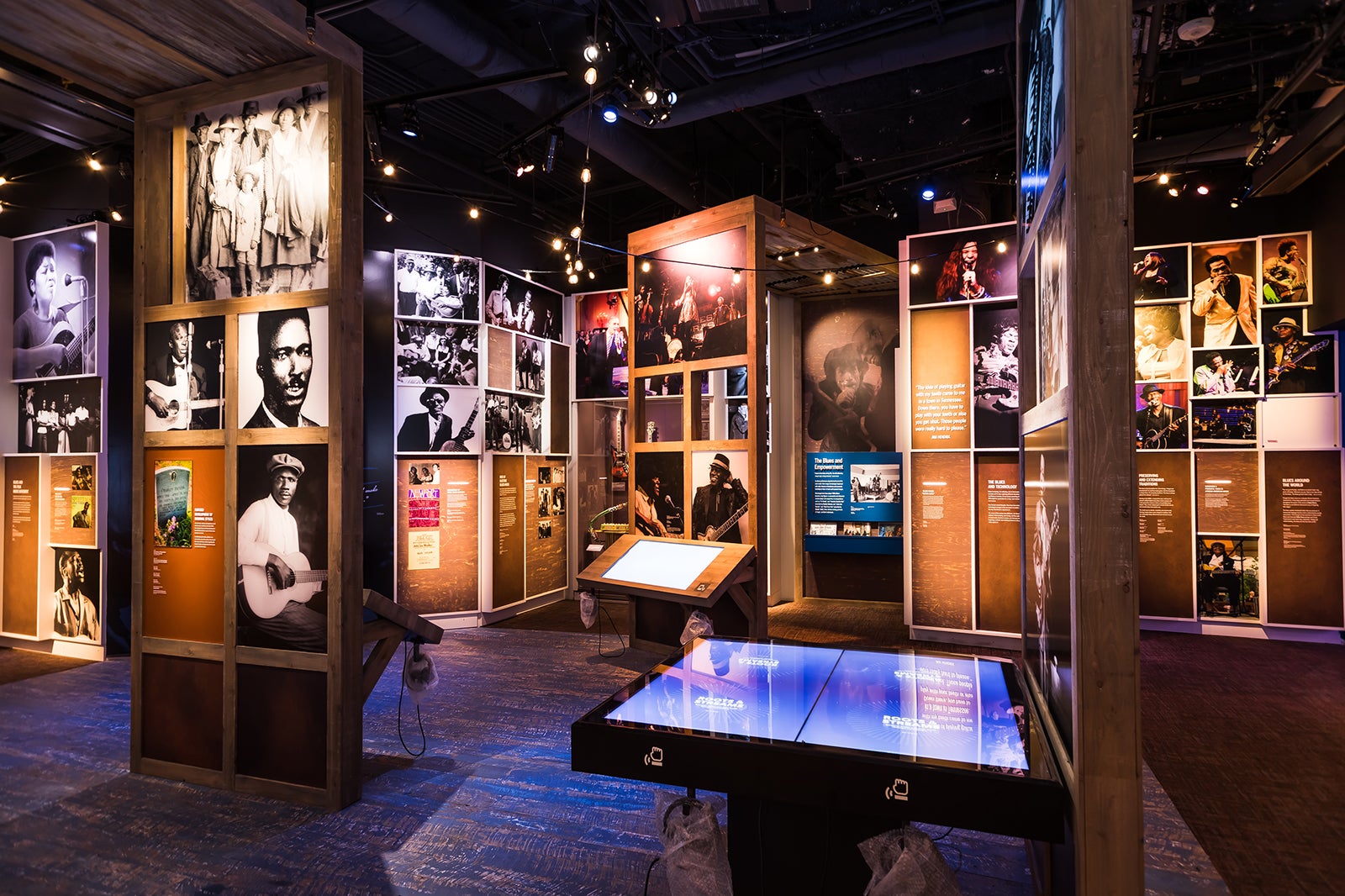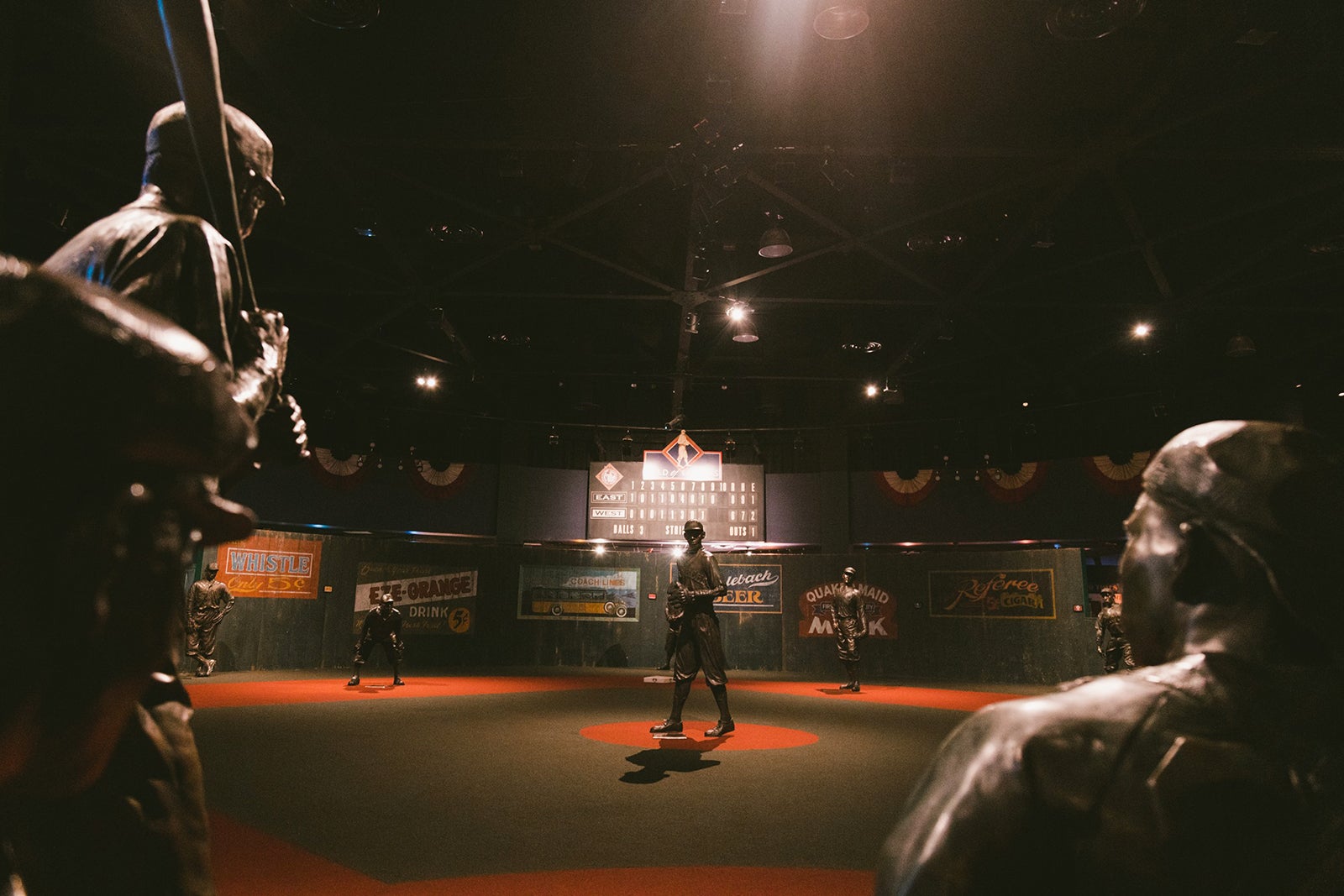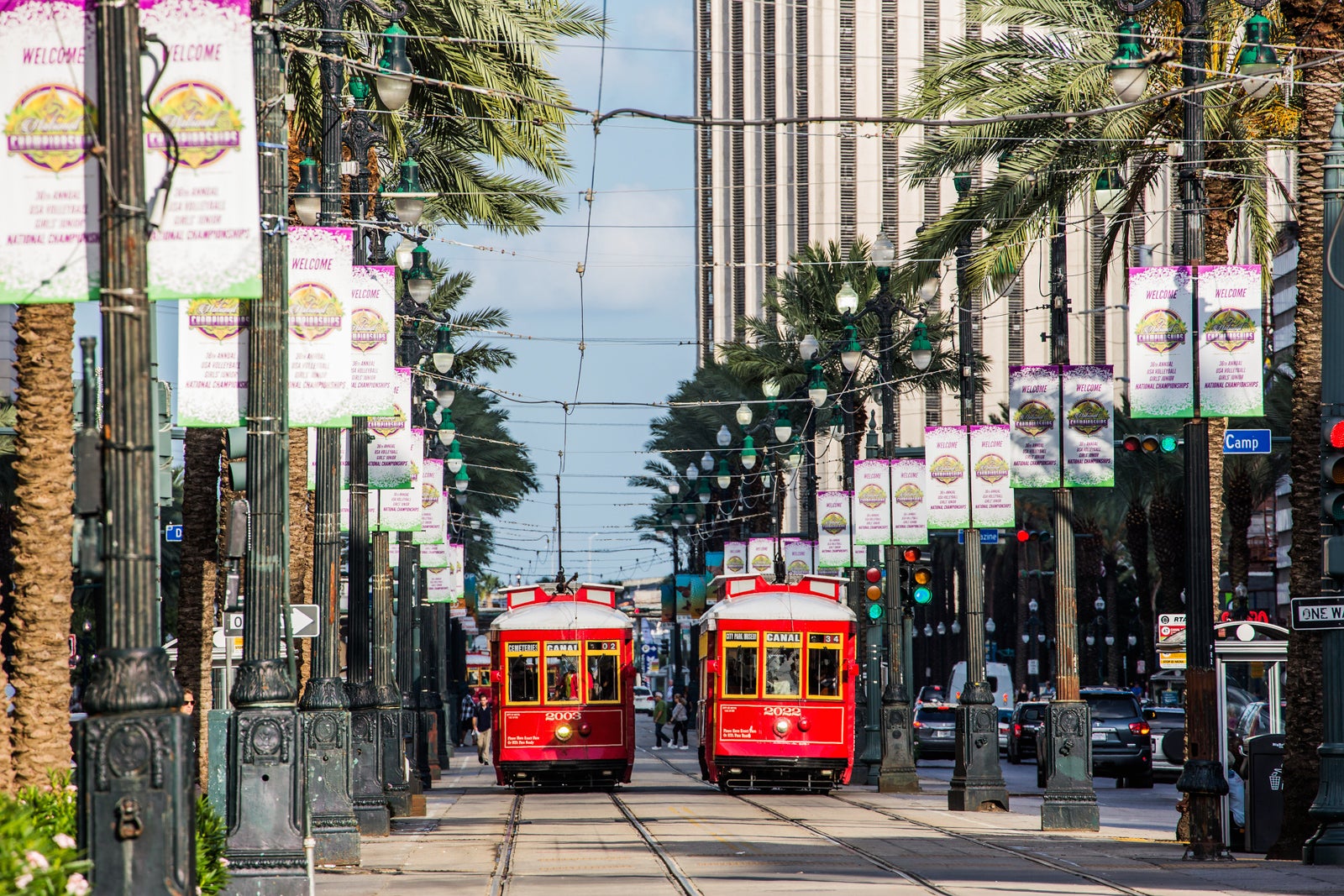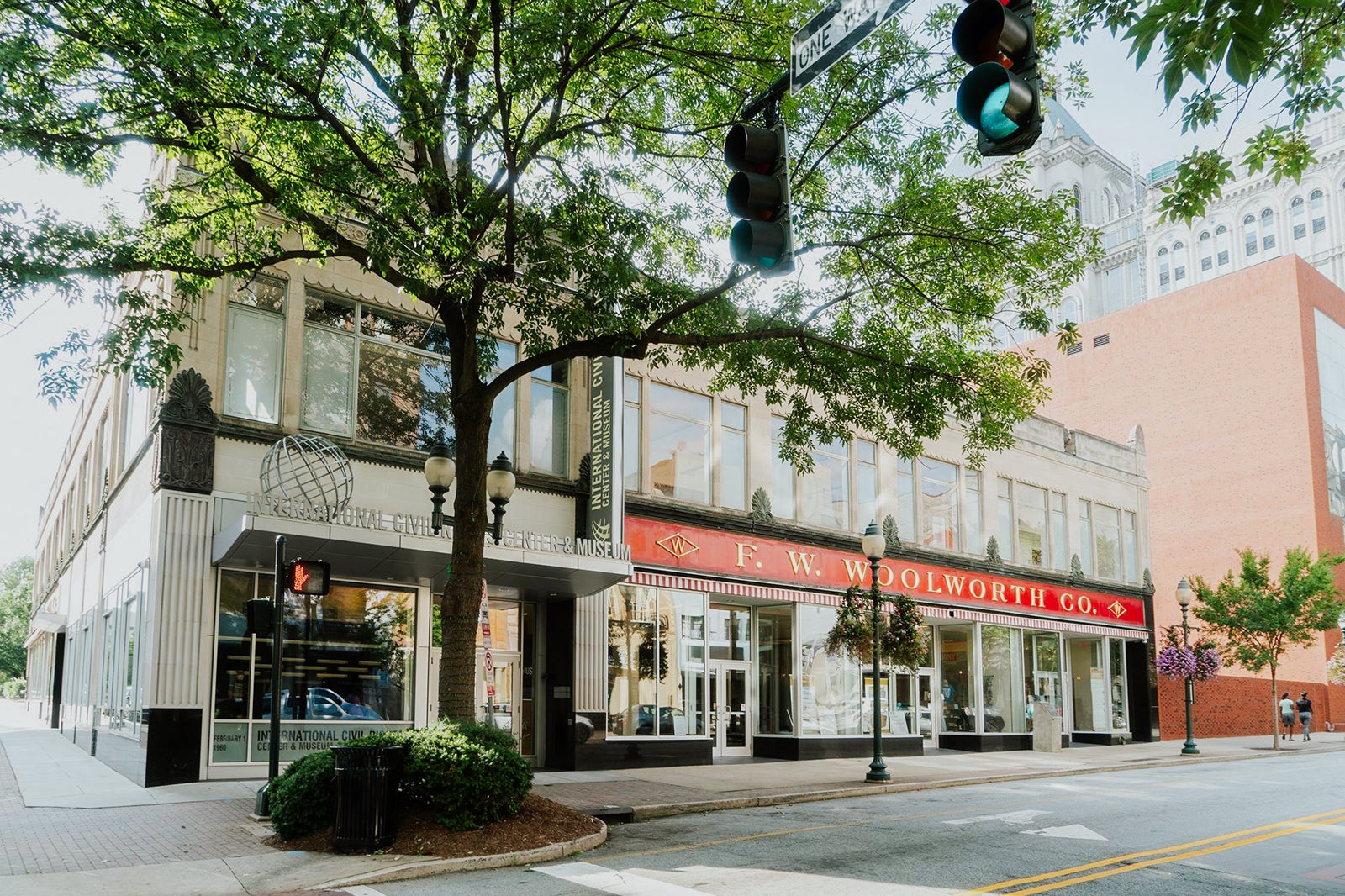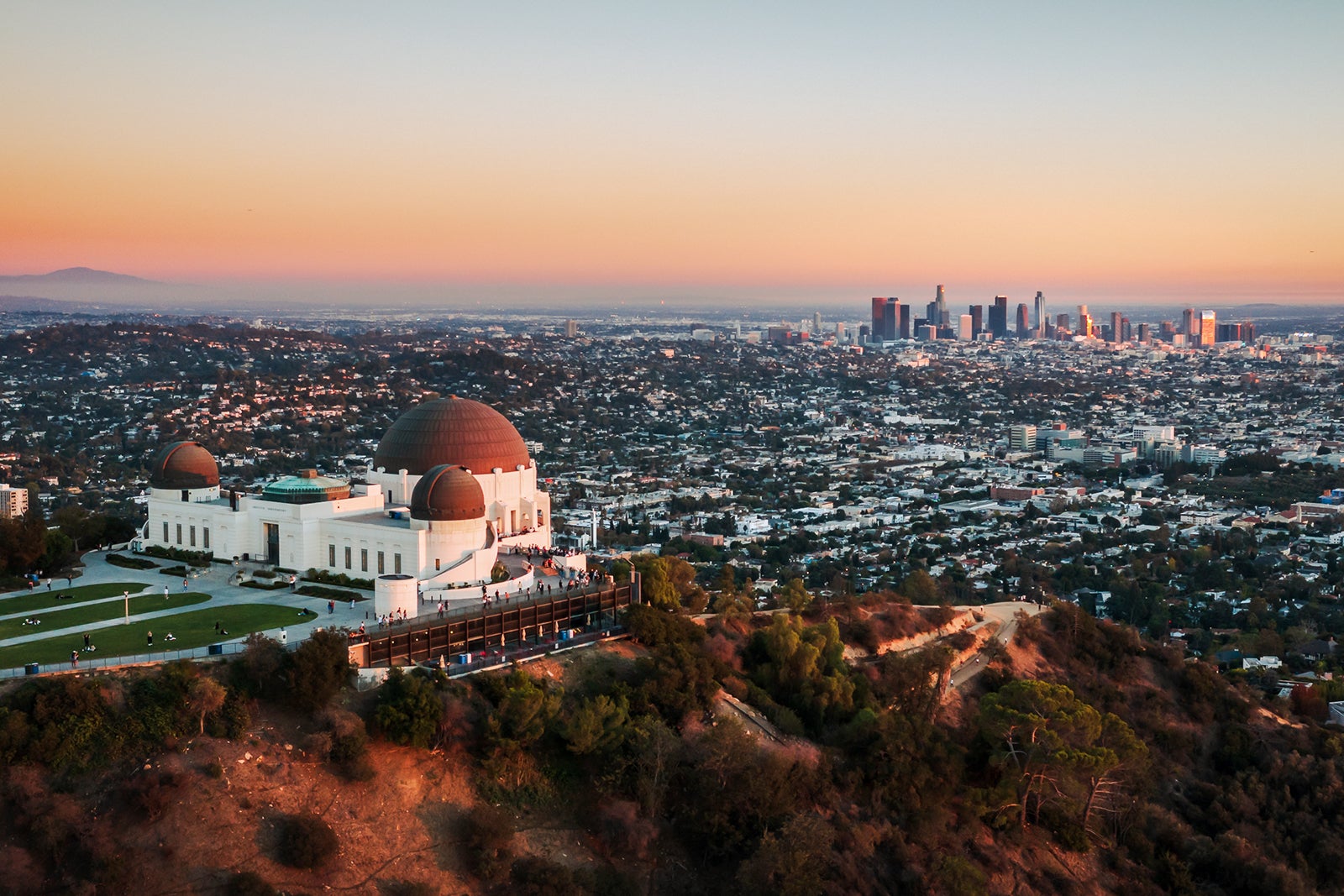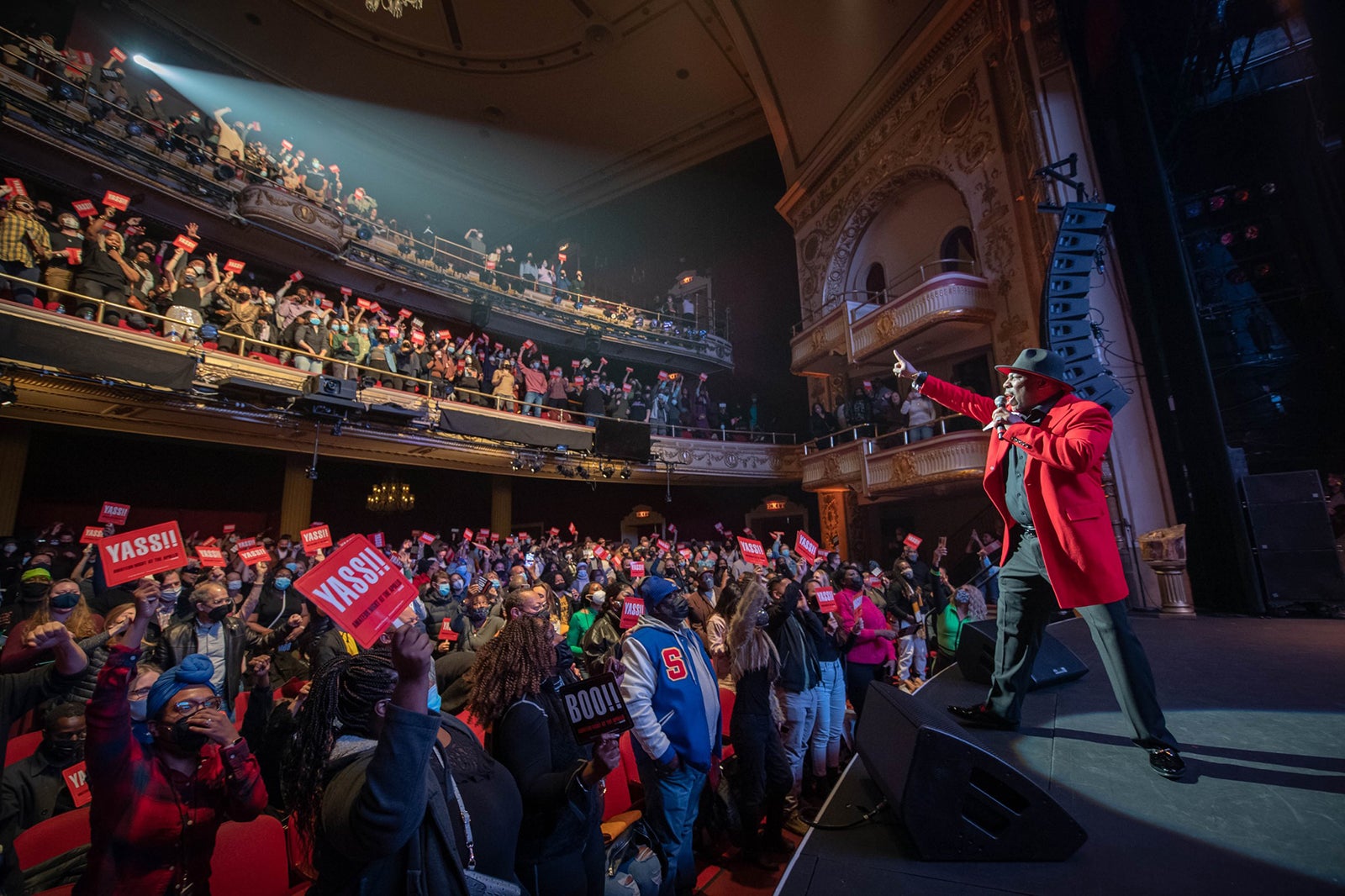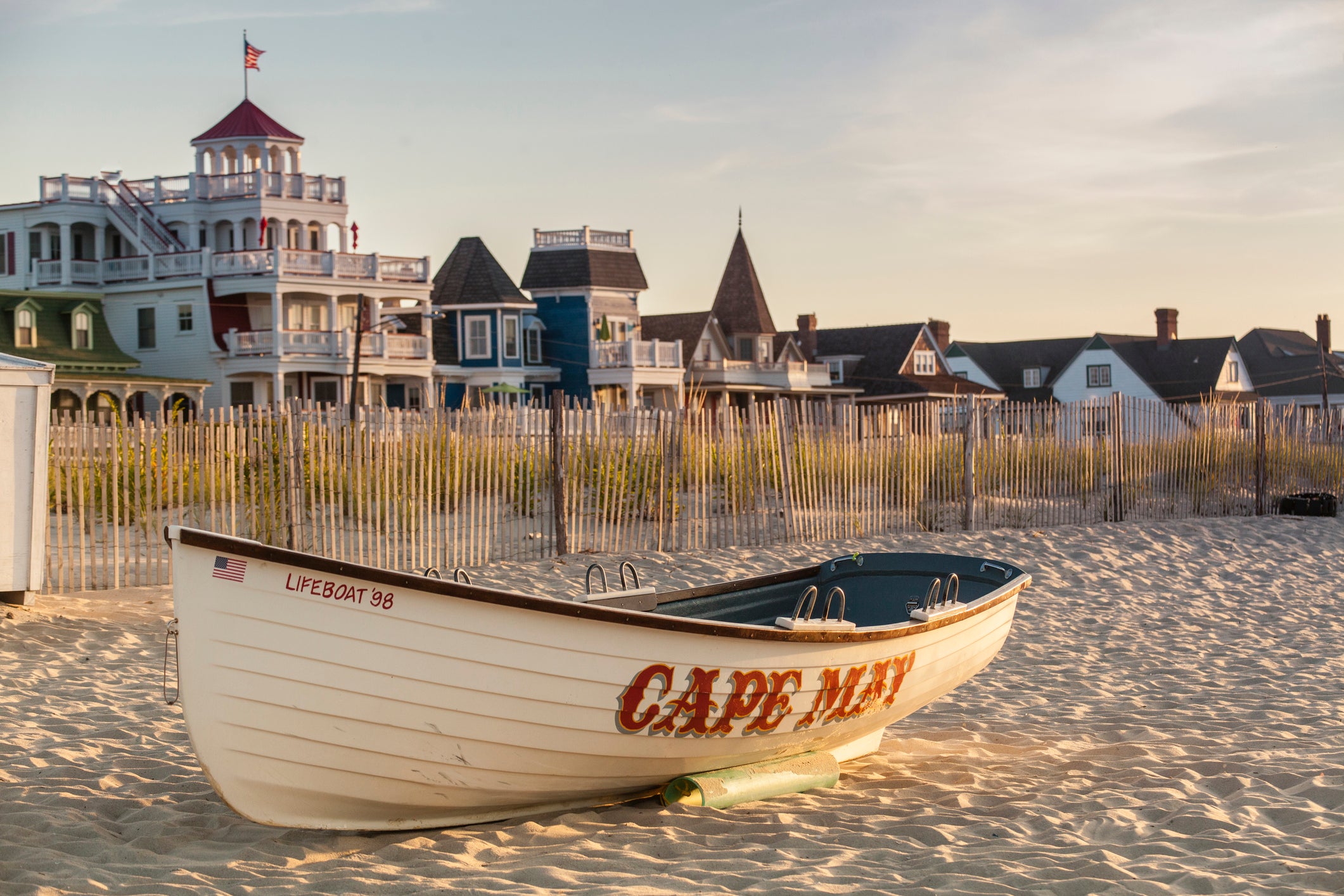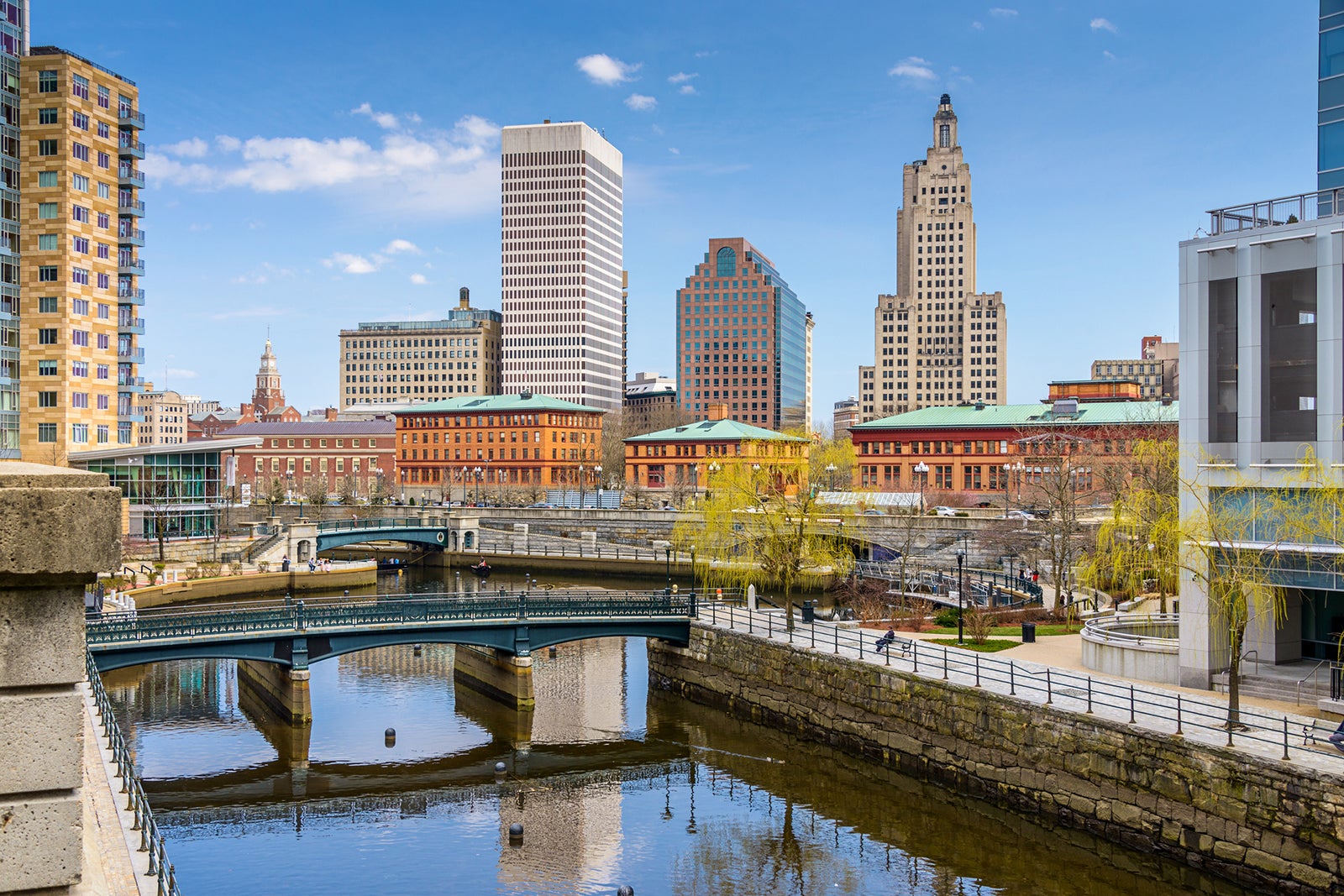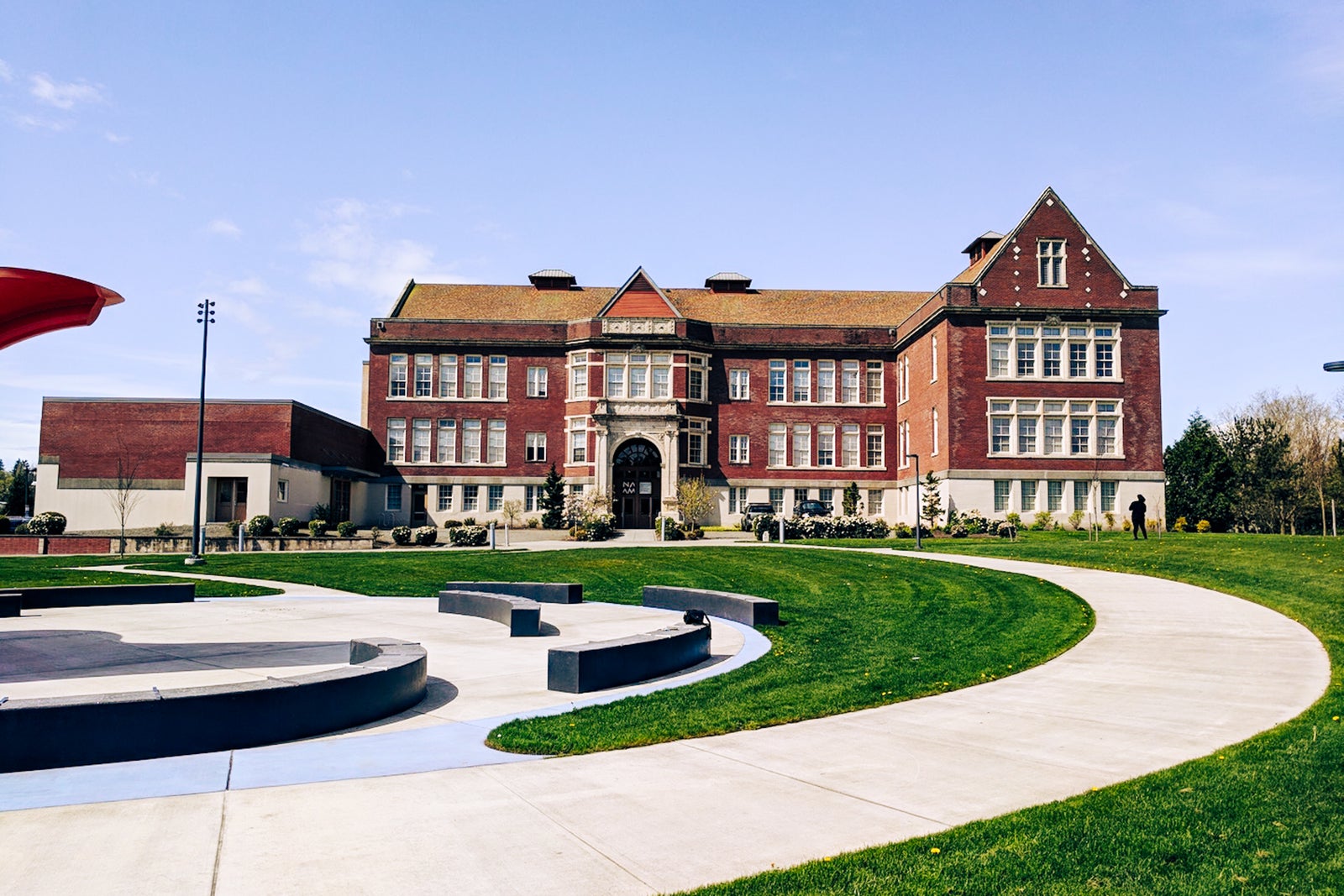10 destinations where you can learn about Black history in America
What began as Negro History Week in the month of February — established by historian Carter G. Woodson in 1926 — evolved into Black History Month decades later in 1976.
The annual observance commemorates the triumphs and hardships of Black people in the U.S. It is reserved as a time to honor, celebrate and preserve the memory of the people who selflessly sacrificed to break racial barriers for freedom, equity, inclusion, integration and equal rights.
Learning about Black history and culture shouldn't be limited to Black History Month, though. There are destinations across the country that serve as excellent places to learn more about Black history and the legendary trailblazers who have shaped Black culture, life and history in the U.S. at any time of year.
Alabama
Called the birthplace of civil rights, Montgomery was indeed home to many activists and movements that propelled change in this county.
The Rosa Parks Museum at Troy University takes visitors beyond textbooks to learn about the Montgomery Bus Boycott. The exhibit starts with a feature film of people of all races speaking about what it was like to protest segregation and racial injustices in their city. You are then ushered into a room for a digital reenactment of the night Rosa Parks was arrested, projected from a replica of the Cleveland Avenue bus.
Just two blocks away from the museum is a statue of Rosa Parks near the location where she stood for the bus on Dec. 1, 1955 — the day that etched her name into history.
The museum also speaks about the Freedom Riders, a heroic group of people (including late congressman John Lewis) who set out to challenge segregation at bus stations while riding from Washington, D.C., to New Orleans.
Part of the former Greyhound station in Montgomery, where these riders were met with violence from an angry mob, has been converted into the Freedom Rides Museum, where pieces of the “For Coloreds Only” waiting area and boarding platform are still intact.
Another noteworthy stop in the city is the Dr. Richard Harris House, which was a safe house and a strategic planning location for the Freedom Riders and other civil rights movements throughout Montgomery in the Centennial Hill area.
Mobile is another city rich in Black culture and history.
Just a few miles from the downtown area is Africatown, formed by 32 West Africans who comprised the last known shipment of illegal slaves to the U.S. This historic site is part of Mobile’s African American Heritage Trail.
Download the TPG App today!
Maximize your spending, earn rewards faster, and easily track all of your points and all of your miles all in one place.
Mobile is also the birthplace and home of baseball legend Hank Aaron. Visitors can tour his childhood home (which was moved to Hank Aaron Stadium) for free. Aaron, who broke Babe Ruth’s home run record, did so while enduring hostility and blatant racism.
Nashville
Though it may be best known for country music, Nashville has a rich Black history, too.
Although other sit-ins had taken place in the years prior, 124 students from historically Black colleges and universities around Nashville staged sit-ins at Kress, Woolworth and McClellan lunch counters around town on Feb. 13, 1960.
The students continued their sit-ins and expanded to other locations but were eventually met with violence on Feb. 27, a day that also resulted in 81 arrests. After refusing to pay the associated fine of $50, the students spent a little more than 30 days in jail. Woolworth has been rebranded as Woolworth on 5th (a theater) and has a historical maker outside its doors.
Of course, music has always been an intrinsic part of Black culture, and it has inspired major genres and musical phenomenons. The National Museum of African American Music takes you through the evolution of music from hymns and Negro spirituals to folk music, bluegrass, jazz and present-day hip-hop.
Learn about the pioneers in these genres while curating a personal playlist of songs. There are even a dance room and a recording studio for you to enjoy during your visit.
For tours specific to Black history in Nashville, book through United Street Tours.
Kansas City, Missouri
The epicenter of Black culture in Kansas City is in the historic 18th and Vine neighborhood, also known as the jazz district. At a time when Black residents were facing housing restrictions, the area was filled with successful Black businesses. Medical practices, churches, restaurants and hotels built by people living and working in the area created a sustainable and thriving community. That community still exists today and preserves the stories of perseverance and triumph through cultural entertainment.
The Black Archives of Mid-America is dedicated to highlighting the contributions of Black people in the region through exhibits and artifacts. As an extension of the Equal Justice Initiative, there is a memorial dedicated to Black Americans who were lynched throughout Missouri. The building is former Firehouse No. 11, which was Kansas City’s first Black fire company.
Mutual Musicians Foundation, now a National Register of Historic Places site, was created in 1917 as a gathering place for Black musicians. It was here those musicians found refuge and could safely rehearse. Artists and musicians still gather here on weekends for late-night jam sessions.
You can learn more about the history and influence of jazz in Kansas City at the American Jazz Museum, which takes you through a hands-on visual and sonic experience while you learn about local and international legendary jazz musicians like Charlie Parker, Jay McShann and Pearl Bailey. Interactive mixing rooms allow you to try your hand at creating your own jazz sound, and there are live performances at the Blue Room throughout the week.
Baseball, America’s favorite pastime, was not always the diverse sport it is now. In fact, it wasn’t until April 1947 that Major League Baseball had a Black player, Jackie Robinson, who started at first base for the Brooklyn Dodgers.
The Negro Leagues Baseball Museum in Kansas City pays homage to players such as Jackie Robinson and Satchel Paige, and it’s just a few blocks from the YMCA, where the Negro League was formed in 1920. Immerse yourself in the stories of the unsung heroes and legends of baseball through interactive computer stations, artifacts and the Hall of Fame locker room.
New Orleans
From jazz music to Creole cuisine, Black people have a rich tapestry in the bayou — and there’s no better place to start than The George & Leah McKenna Museum of African American Art. The museum houses a private collection of documents, artifacts and art that immerses viewers in Black excellence from the 18th century to the present day.
Next up is Le Musée de f.p.c., a historic house museum. It’s one of the few attractions dedicated exclusively to telling the story and preserving the material culture of free people of color.
Also owned by the McKenna family, Le Musée de f.p.c comprises a collection of documents, paintings and decorative arts that simultaneously interpret and preserve the history and culture shared by so many free people of African descent in New Orleans and throughout the country.
Another historic landmark to add to your list is Congo Square, formerly known as Place de Nègres. This area is known for being a gathering area of slaves, who on Sundays would spend their day off selling goods, singing and playing music.
And who can come to New Orleans and not experience the cuisine that inspires recipes around the world? After opening in 1941 as a sandwich shop, Dooky Chase’s Restaurant quickly became the meeting place for civil rights, music, entertainment and culture.
Leah Chase, known as the Queen of Creole Cuisine, turned the shop into one of the first African American fine dining restaurants in the U.S. Also, by adding the work of Black artists to the walls of the restaurant, Dooky Chase’s was the first art gallery for Black artists in New Orleans.
Greensboro, North Carolina
Established in 1891, North Carolina Agricultural and Technical State University — the top historically Black college in the U.S. — is located in Greensboro. This illustrious university has a long-standing history and a significant role in civil rights for African Americans.
On Feb. 1, 1960, Jibreel Khazan (then known as Ezell Blair Jr.), Franklin McCain, Joseph McNeil and David Richmond — four freshman students at A&T — helped initiate sit-in demonstrations. The sit-in occurred at Woolworth when the four sat down at a whites-only lunch counter. They became known as the A&T Four, and their nonviolent protest propelled a wave of similar sit-ins that ultimately played a key role in ending segregation in North Carolina and across the South, including the aforementioned Feb. 13 sit-in in Nashville.
The site is now a historic landmark that gave birth to the International Civil Rights Center & Museum, which refers to itself as “an innovative social justice educational organization devoted to the understanding and advancement of civil and human rights at home and around the world.”
In a wooded area of the Guilford College campus is a path traveled by many seeking freedom, also known as the Greensboro Underground Railroad. Here, you can walk the path to the Underground Railroad Tree in a self-guided tour that simulates how fugitives navigated the area with the help of abolitionists and local African Americans, both free and enslaved.
In 1949, The Historic Magnolia House, formerly known as the Daniel D. DeButts House, opened its doors to provide a place for Black travelers. It is believed that it was one of the only hotels that provided lodging for African American travelers between Richmond, Virginia, and Atlanta during Jim Crow. The hotel, which is listed on the National Register of Historic Places, went on to be featured in six editions of Victor Hugo Green’s “Green Book” and is also believed to be the only Green Book hotel still in operation within North Carolina.
Celebrities such as Duke Ellington, James Baldwin, Tina Turner and Ray Charles all resided at the hotel during their performances and travels in the area. Currently, the hotel is open for stays, brunch and special events.
Related: A conversation with Candacy Taylor, curator of the Smithsonian’s new traveling ‘Green Book’ exhibition
Los Angeles
When we speak about Black history, it’s important to remember how multifaceted this history is, and we would be remiss to leave out the heroic actions of Black people who shaped the progression of LGBTQIA+ rights and freedoms.
One such hero is Jewel Thais-Williams, a nightclub pioneer who opened Jewel’s Catch One bar in Los Angeles in 1973. Her establishment was hailed as an “epicenter for gay Black life,” serving as a safe space where people could let loose and be themselves at a time when police were arresting people for their sexual preferences. While the establishment has changed to fit the times, it is still open.
Also in Los Angeles, The African American Firefighter Museum pays homage to Black firefighters, including Sam Haskins, who was listed as the first Los Angeles fireman of African lineage when he was hired in 1892. With an array of documents, equipment, artifacts, photos and stories, the AAFFM is the first and the country’s only freestanding African American firefighter museum.
No trip to the City of Angels is complete without visiting Watts Coffee House, a venue that sought to revive the historic Watts Happening Coffee House.
Watts Happening became a gathering place for artists and activists following the Watts Rebellion in 1965, when the neighborhood was burned to the ground in response to the arrest of a Black man by white law enforcement. Just across the street from the original location, the current coffee shop preserves the legacy of Watts Happening.
New York City
Starting as a small luncheonette with only six booths and 15 stools in 1962, the legendary Harlem restaurant Sylvia’s is helmed by namesake Sylvia Woods, who is known as the Queen of Soul Food. Garnering the attention of foodies, politicians, celebrities and TV shows, this establishment has long been a staple in the Black community.
Famous African American poet and author Langston Hughes is one of the most well-known creatives credited with being a part of the Harlem Renaissance. His home, where he spent the last 20 years of his life creating some of his most popular literary works, is a registered historic landmark in Harlem.
While open to the public for tours and viewings, Hughes’ residence is also home to the I, Too, Arts Collective, a nonprofit organization committed to nurturing creativity within underrepresented communities.
Another site to see is the famous Apollo Theater, which opened its doors to Black people in 1934. It hosted weekly talent shows and birthed the careers of some of the world’s most famous entertainers, including Marvin Gaye and James Brown. Visitors can still attend live performances and events at the music hall.
Related: An introduction to New York City’s neighborhoods
New Jersey
New Jersey’s relevance in Black history dates back to the 1600s when the first captive Africans were brought to the mid-Atlantic area by Colonial settlers.
Now, the Black Heritage Trail spreads across the state of New Jersey, identifying historical landmarks as well as commemorating the contributions of past and present residents.
Noteworthy spots along the trail include the Scotch Hills Country Club (renamed to Shady Rest), the first Black-owned golf and country club in the U.S. In the northern part of the state, you can find the first Black church in Morristown, the Bethel Church of Morristown, which was established in 1843. The trail also identifies museums and Black-owned restaurants and businesses throughout the state.
The story of abolitionist Harriet Tubman is one with many layers, but Cape May plays an integral part. Famous for its beaches, boardwalks and Victorian-style homes, it is here that Tubman lived and worked to help bring enslaved people to freedom.
The Harriet Tubman Museum outlines her life, her work in Cape May and her journeys. You can also take a trip around Cape May on an Underground Railroad Trolley Tour to learn more about the history of the area and the passage enslaved people took using the Cape May lighthouse as a guide through treacherous waters.
Providence
You may not think of Rhode Island as a place to learn about Black history, but there are many stories to be told in the state’s capital, Providence. The self-guided Providence Walks Early Black History Tour pinpoints those sites.
At the Providence Gazette, you can see the ads of yesteryear placed to sell enslaved people, as well as ads seeking assistance to capture runaway slaves. The site truly magnifies Providence’s role in upholding slavery through the power of media.
Along the tour is a stop at Mount Hope Sharing Garden, which recognizes the enslaved and free Black farmers of Rhode Island. Here, you can learn more about how the crops aided in their survival long after enslavement.
Another important part of the tour is the Snowtown Riot Plaque, which honors the five people who lost their lives in 1831 when a white mob terrorized Black neighborhoods in Providence for four days.
Seattle
Black history in Washington state dates back to approximately 1845 when a man from Missouri, George W. Bush, his wife, Isabella, and their five children (along with several other families) settled into the southern Puget Sound area now known as Bush Prairie. African Americans continued to flock to the state, and many were recruited for work in coal mines.
In later years, the prevalence of Black people in the area was also the result of immigration from African countries such as Ethiopia, Sudan and Somalia.
With a mission to share the “evolution of its Black community” in the Pacific Northwest, the Northwest African American Museum tells the story of the area’s Black history, present and future through art, artifacts and exhibits.
As the population grew through the centuries, so, too, did the African American influence on music.
From the early to mid-1900s, the city had a bustling jazz scene. It’s where legends like Ernestine Anderson and Ray Charles got their start. Dimitriou’s Jazz Alley and The Royal Room celebrate the contributions of local artists, capturing the soulful essence of clubs during that time.
In Greenwood Memorial Park cemetery, the Jimi Hendrix Memorial celebrates the life of the international musician and guitarist who called Seattle home.
Bottom line
There is no American history without unveiling the secrets and truths of Black history. From settlement after enslavement to building bustling communities within the cities across this nation, we can find the intricate stories of triumph and perseverance woven into the tapestry of the U.S.
In February and beyond, those stories should be told and magnified. To learn more, you can visit one of the stops on the U.S. Civil Rights Trail or The Black Experience website.

